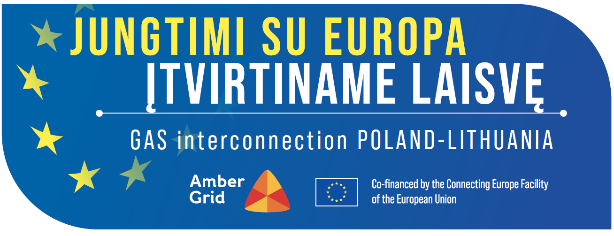Lithuanian gas transmission system operator Amber Grid has already accomplished 90 per cent of construction works of gas pipeline interconnection with Poland (GIPL), welded the entire pipeline extending 165 kilometres across the territory of Lithuania and performed stress tests.
Hydrostatic tests to verify pipeline strength were performed for the first 102 kilometres of the new gas interconnection in winter. In July, these tests were performed for the remaining pipeline section from the River Nemunas at Alytus to the Lithuanian-Polish border. Test results confirmed that the pipeline is capable of operating at maximum anticipated pressure. The 17 km pipeline section from Santaka gas metering and pressure regulation station in Šeštokai to the Lithuanian-Polish border is special. The pressure will reach 84 bars at this section, thus being the first such natural gas pipeline to be constructed in Lithuania. During testing, this section was operated at a pressure of as many as 105 bars.
“While implementing this strategic Lithuanian energy project we particularly strive to both keep to the strict works schedule and ensure the highest security and reliability standards. We have tested the entire 165 km gas pipeline at maximum capacity and the results confirm that these pipes fit for secure transmission of gas,” states Nemunas Biknius, CEO of Amber Grid.
The entire gas pipeline route has also been inspected for explosives, and last summer complex works of horizontal directional boring, laying pipeline sections beneath the largest Lithuania’s rivers – Neris at Kernavė and Nemunas at Alytus – were carried out. This summer, interconnection installation works have been concentrated in Lazdijai district, Santaka gas metering and pressure regulation station being constructed at the edge of Šeštokai.
The GIPL pipeline will connect Lithuanian, Baltic and Finnish gas markets with the European Union. The gas pipeline will enable gas supply from various sources, more efficient use of the Lithuanian gas transmission system and Klaipėda LNG terminal, as well as ensure future biomethane and hydrogen flows in the region. The GIPL interconnection will make it possible to transport up to 27 TWh of gas per year to the Baltic countries and up to 21 TWh per year to Poland.
